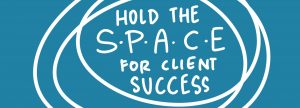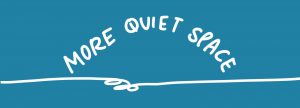
Meetings in 2021 should have more ….
Earlier this year, someone (brilliantly) said to me that when we meet online, we have the opportunity to create good meeting habits, and leave our bad meeting habits behind. Let’s come together for purpose and creativity – Meetings shouldn’t be a collapse across the finish line. So I asked my favourite facilitators and graphic recorders what they’ve noticed this year online that we should spread for good meeting habits in 2021. Big themes include more time for rest, clarity with visuals, and elegant design so we can connect meaningfully with each other. I felt a bit awkward making a quote for myself, so I’ll just add here – try to bring out more of your authentic self, so it can bring out others’ authentic selves too. Embrace vulnerability and what you once thought you would be better off keeping separated. Here’s what we want to see more of in 2021 meetings:
 Clear, Kind Communication
Clear, Kind Communication
So little is about technology. We connect beautifully online through solid facilitation and clear, kind communication which erase the physical distances between us. – -Brandy Agerbeck, www.loosetooth.com

Throw Out A Golden Thread
In virtual experiences, it seems to be easier for people to take a backward step. The digital layer accommodates distractions and disengagement, and can encourage muting ourselves and hiding – not consciously or purposefully – it just seems to allow our shy parts to take the opportunity to not be seen. For me, this suggests two salient things:
(1) Virtual facilitators need to keep the design of our sessions simple and powerful at the same time. We, too, can get lost in the tech layer but in these environments we actually need to deepen ourto the faces and bodies on the screen. To stay in human contact, our experience design needs to be both elegant and potent.
2) Once we have an elegant design, we may need to shift a more gentle style toward a slightly more assertive style in terms of getting participant engagement. Since people can easily shrink online, this requires facilitation confidence and a willingness to notice, name, and actively summon people to come forward. We need to observe intently and then use invitation statements like, “Sam, you look like you’re considering something…is that accurate? Would you be available to share?” If they say no, no big deal. (P.S. They rarely do.) But it helps to more frequently throw out the golden thread and ask someone to catch it so we have the chance for productive conversations in an environment that can compromise them.” — Sunni Brown, http://sunnibrown.com/

Hold the Space for Clients to be Successful
We need to be process consultants, engaging with our clients to help them navigate the volatility and ambiguity of the virtual space. We need to model professionalism and calm in dealing with uncertainty. We need to hold the space for our clients to be successful. — Brian Tarallo, www.lizardbrain.com
 More Quiet Space
More Quiet Space
We need more quiet space. We need to support “moving at the speed of contact” – so moving only so fast as facilitators that we and our participants can stay in contact with ourselves and one another. — Nevada Lane, www.lanechangeconsulting.com
Let’s invite everyone to slow down, to leave breathing room in agendas, and allow time for reflection during meetings. Not every minute needs to be filled with conversations, presentations or interactive activities. Many answers to complex issues happen in moments of transition and introspection when we allow time to process what we have heard and learn from others. — Adriana Contreras
Make space for participants to connect casually and take pauses during zoom meetings! Meetings move so quickly that it doesn’t allow for connection and casual discussion – this might even be able to help with Zoom fatigue. — Michelle Buchholz, www.cassyexconsulting.com
 Keep Accessibility Top of Mind
Keep Accessibility Top of Mind
Keep accessibility top of mind when gathering online, as not everyone may have equitable access. People may have issues with their mic or camera and cannot be heard; have internet bandwidth limits and can’t see live visuals or participate in MURAL or Miro boards; unexpected power outages that boot them from the meeting; or online meeting is just not the right fit for the group. How can we engage in different ways? My hope is our field thinks beyond the walls of Zoom and innovates a variety of methods for harvesting ideas and using visuals — Tanya Gadsby, https://thefuselight.com

Remember Play
As a facilitator, one of the things I want to see more of in meetings is PLAY. Meetings are headier than ever (literally!) on Zoom, and often as brief and task-oriented as possible. We need to bring people back into human connection with their bodies and with each other. One of the best ways to do that is through play, so I’m bringing in lots of improv games to make play both fun and meaningful. — Avril Orloff, http://outsidethelines.ca
Name Physical Needs, Too
Just because we are not physically there doesn’t mean we do not still have physical bodies and needs. Offering folks an opportunity to share their needs during introductions is a powerful tool in person and online. When we normalize physical needs and check in about where everyone is at (rather than singling out the person with an access need or with their camera off) it creates a more comfortable space for everyone. Even just an invitation to share about what’s going on around them, the weather the people around can be a way to build connection. We are all at home, or in unusual circumstances. Let’s use that to come together. –-Annalee Kornelsen, www.heart-scribe.com

Modelling How We Want to Be Together
Addressing power dynamics, colonialism, and white supremacy – and working towards equity is necessary in all spaces to meaningfully connect and imagine a world that is not reproducing toxic loops of dominance and exploitation, but rather focussed on reciprocity and collective care. Particularly addressing anti-black racism, anti-indigenous racism, transphobia, transmysoginy, and ableism to tend to where care is the most needed. Taking an intersectional approach to liberation work will result in more human spaces for all.
Taking time to build trust with those in the Zoom room is important. Creating space at the beginning of a session to say hello, introduce yourself, and share how you’ll be there to visually support them makes a world of difference. — Carina Nilsson, www.carinamarienilsson.com
Creating exceptional online graphic recording experiences
 Immediate Access to the Visuals
Immediate Access to the Visuals
Participants need to have immediate access to the charts, whether it’s a quick showing of the work during breaks and at end of meeting, or sent to everyone within hour of meeting end. Too often a meeting ends with no callback to what that person in the background has been doing. I’ve never been a big fan of templates but I think all participants should have some type of template or workbook sheet in advance of meeting to draw along with me to keep them more engaged. — Leah Silverman, www.designbyleah.com
Integrate the Graphics
An online graphic recording is an exceptional experience when it’s part of the process and not an afterthought or gets the occasional spotlight. — Brian Tarallo, www.lizardbrain.com
Given the amount of Zoom fatigue, I think the WOW factor and appreciation for verbal walkthrough of digital graphics is impactful: Everyone can see the graphic, as opposed to looking across a whole ballroom to see it, and people are surprised with a visual record of their ideas. What helps:
- Build-in time for verbal walkthroughs of graphics during the meeting. People love it, it really brings out the value of having a graphic recorder there, and people need and appreciate something that helps orient, navigate and anchor them in the bigger picture of the conversation
- Shorter meetings, co-designed with graphic recorder/facilitator
- Even more education about what is possible digitally. Clients don’t know what they don’t know. Sometimes a client will come in with a preconceived idea of what they want without knowing there are options available to them that might actually be better (e.g. MURAL, MIRO, live visualization tools like Mentimeter, GroupMap, there are so many it’s hard to keep up with even for visual strategists like us!) — Yolanda Liman, www.drawingitout.com
Support Online Reflection
When working in the digital space I’ve felt words are less important. The graphic recording experiences that move me are ones where form and shape and a key image or two are captured and the group has quiet time to reflect on those. — Nevada Lane, www.lanechangeconsulting.com
While providing digital graphic recording, I noticed when I was able to be more involved in the facilitation of the event, participants were more engaged with the visual. Specifically, when I was able to provide deeper explanation and share stories of my lived experience, participants gave much more positive and enthusiastic feedback. This meant more coordination with the facilitation team and having them provide more time and space for my role as a graphic facilitator. — Michelle Buchholz, www.cassyexconsulting.com

Visuals Beyond Graphic Recording
Give visuals a central role in the gathering: in welcome messages, visual agendas, graphic recordings, visual collaboration tools, templates, timers to let people when to come back from breaks, follow up emails, social media engagement, etc. For memorable online meetings, visual practitioner need enough time to introduce ourselves and our process at the beginning and the opportunity to report back at the end of the gathering. — Adriana Contreras 
Connect Emotionally, Intuitively, Visually
I see the power of graphic recording even more now that we’re online. I’ve heard folks say “Wow! It’s like we’re all in the room together again”. And “seeing our thoughts all together like this, is so much more how we think and communicate naturally. I don’t see myself in a stack of papers or power point”. Now that we are relying heavily on digital tools, and separated from each other’s visual/physical presences, humanizing the work and seeking connection on other levels (emotional, intuitive and visual) becomes all the more important.” Annalee Kornelsen , www.heart-scribe.com
As an additional gallery view (as opposed to spotlighting) online GR can help participants focused on the session. I work on paper on a small wall across from the computer, which keeps the human element in, and in relation to the big picture people can see the responses take shape to specific discussion points. — Leah Silverman, www.designbyleah.com


